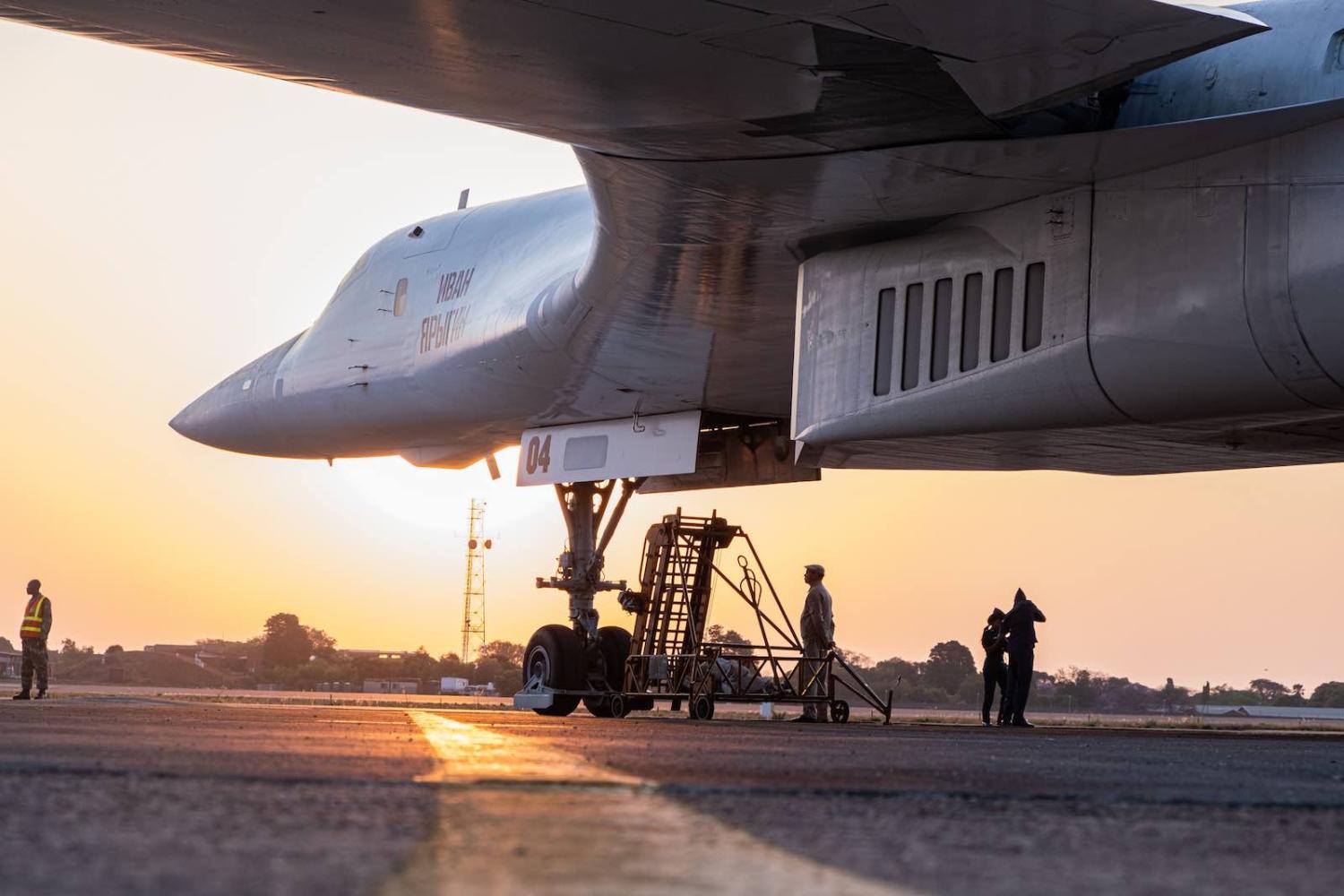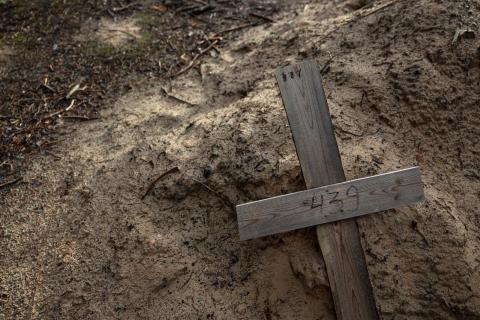“Valiant breaks London–Cape record by 54 mins”, led the 9 July 1959 edition of the Cape Argus. The arrival of the sleek, white-painted, and still highly classified long-range British nuclear bomber, which represented the cutting edge of Britain’s new Cold War airborne nuclear deterrent, drew large crowds at Cape Town’s DF Malan Airport. But despite the record-breaking flight to South Africa, it was no publicity stunt. Its real purpose was part of a Royal Air Force experimental program into the then-emerging technology of air-to-air refuelling to increase operational reach.
Sixty years later, on 23 October 2019, in a groundbreaking visit to demonstrate their operational reach and capabilities, which again drew large crowds of onlookers, two white-painted Russian Aerospace Forces Tupolev Tu-160 “Blackjack” nuclear-capable bombers touched down at Air Force Base Waterkloof near Pretoria. It was the end of an 11,000-kilometre non-stop flight from Engels air base in Russia to South Africa, refuelling in the air over the Caspian Sea en route. Significantly, this is the first occasion that Tu-160 bombers have landed on the continent of Africa.
Although South Africa has never bought Russian weapons, this situation could change in the future.
Russia has been attempting to regain influence in Africa and the Indian Ocean region in recent years. From a historical perspective, although the former Soviet Union had first begun making port calls along the East African coast astride the southern routes to the Suez Canal in 1965, and it had long wanted to spread its influence in both the Indian sub-continent and in East Africa, it was not until mid-1968 that it had supported these efforts with a growing and continuous naval presence in the Indian Ocean region.
From a Western perspective, NATO contingency planning, as part of measures to counter Soviet maritime power outside the NATO area, was focused on maintaining the free flow of oil and supplies essential to the support of the NATO nations. It covered contingencies ranging from times of tension and limited aggression up to and including major aggression. The five specific areas of high probability of operations identified were the Caribbean Sea and Cape Verde in the Atlantic, the Cape of Good Hope straddling the Atlantic and Indian Oceans, and the Mozambique Channel, the Arabian Sea, and the Straits of Malacca in the Indian Ocean. These were considered the focal points on Western trade routes where obstruction or limited aggression against Western trade could most be expected. Of particular significance was the vulnerability of oil supply routes around the Cape.

Following the demise of the Soviet Union, Russian influence in Africa and the Indian Ocean region greatly diminished. Yet the pace of current Russian re-engagement in Africa and the Indian Ocean region, as part of a renewed strategy of influence, has accelerated as US influence has waned and America’s military primacy in the Indo-Pacific looks increasingly uncertain.
The October visit of the two Blackjack bombers to South Africa coincided with the inaugural Russia-Africa summit in Sochi, Russia, which was attended by South African President Cyril Ramaphosa and more than 40 of the continent’s leaders. The summit, which included an arms fair, focused on key areas of cooperation between Russia and African countries. It was, according to a South African government statement, “expected to deepen friendly relations between the Russian Federation and countries of the African continent at both bilateral and multilateral levels” and forge closer collaboration on regional and international issues of common interest. Moscow has military technical cooperation accords with more than 30 African countries.
Military-to-military cooperation between Russia and South Africa stems from a memorandum of understanding signed between the two countries in June 1995, under the newly elected Mandela government. Many of the senior ANC-appointed members of the new South African National Defence Force at that time, and many of the currently serving senior military and political leadership, received their training and education in the former Soviet Union during the struggle against apartheid. Military-to-military relations between South Africa and Russia are not, however, solely built on struggle politics, but rather on fostering mutually beneficial partnerships based on common interests. Although South Africa has never bought Russian weapons, this situation could change in the future.
More recently, in August 2018, Russia also signed a military technical cooperation agreement with the Southern African Development Community (SADC) on the sidelines of the BRICS summit in South Africa. And in April last year, Russia’s and Mozambique’s defence ministers signed an agreement to develop military ties, giving Russian warships access to Mozambique’s ports. The former Portuguese colony of Mozambique, one of the world’s poorest countries, is hoping to attract significant Russian investment, including from Rosneft, the Russian oil behemoth, after vast reserves of natural gas were discovered off the northern coast of the country in 2010, adjacent to Cabo Delgado province, which is threatened by an Islamist insurgency.

In a significant development, as part of military cooperation and interoperability with South Africa, Russia will later this month take part in an inaugural South African, Russian, and Chinese naval exercise hosted by South Africa in Cape waters, focused on the safety of shipping and maritime economic activity. The Main Planning Conference for Exercise Mosi, the only South African maritime exercise scheduled for 2019, was recently held at the SA Navy’s Fleet Headquarters in Simon’s Town. It was attended by more than 40 senior officers, including Rear Admiral Vladimir Zemskov from the Russian Federation Navy and Rear Admiral Tskhui Yuzhong from the Chinese People’s Liberation Army Navy.
As Russia looks south and at a time of strengthening Sino-Russian strategic, political, economic, and defence cooperation, this trilateral naval exercise hosted by South Africa in its waters sits astride one of the world’s busiest and most important sea routes. It remains the only practical all-weather alternative to the Suez Canal, and tellingly is still the only suitable route for large deep-draught crude oil tankers sailing from the Persian Gulf to Europe and the east coast of the Americas.

